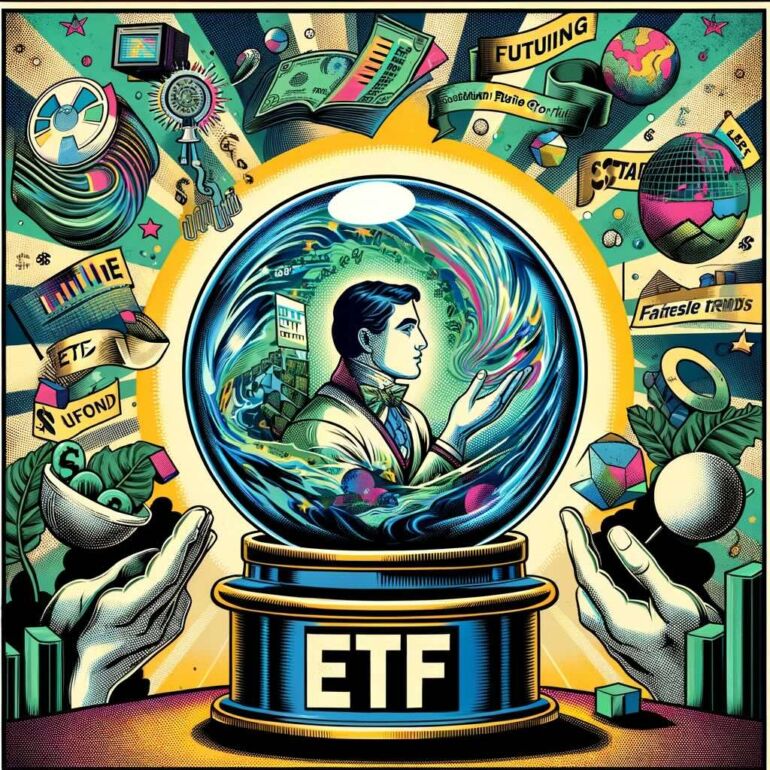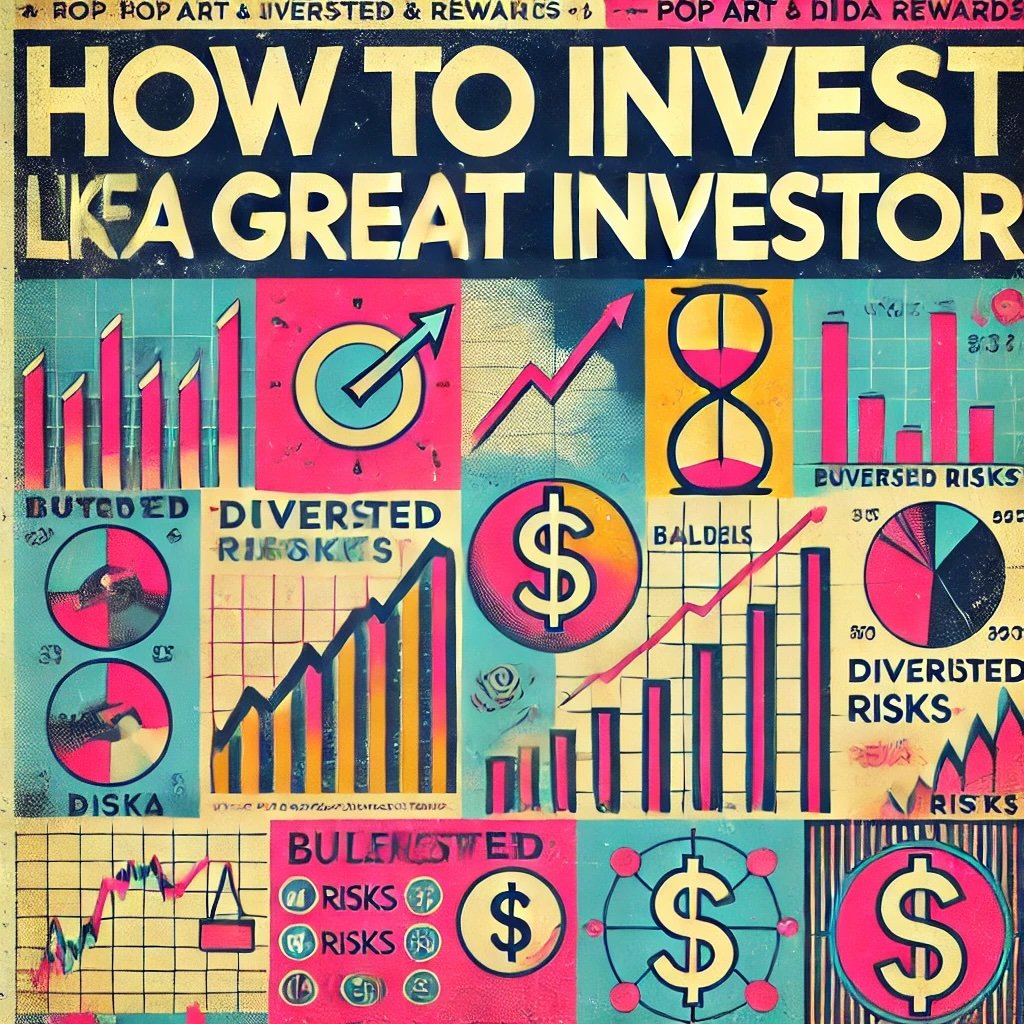In the ever-evolving world of finance, Exchange Traded Funds, fondly known as ETFs, have emerged as an indisputable game-changer. Much like the versatile Swiss army knife of the investment world, ETFs offer a unique blend of traits from various investment avenues, carving out a niche of their own in the process. Imagine being able to have your fingers in multiple pies at once, but with just a single transaction, now that’s a convenience that’s hard to ignore, isn’t it? Offering the diversification benefit of mutual funds and the flexibility of individual stocks, ETFs essentially bring the best of both worlds to your investment table. They are a basket of securities, ranging from stocks and bonds to commodities and even real estate, that you can buy or sell on an exchange much like you would a regular stock.
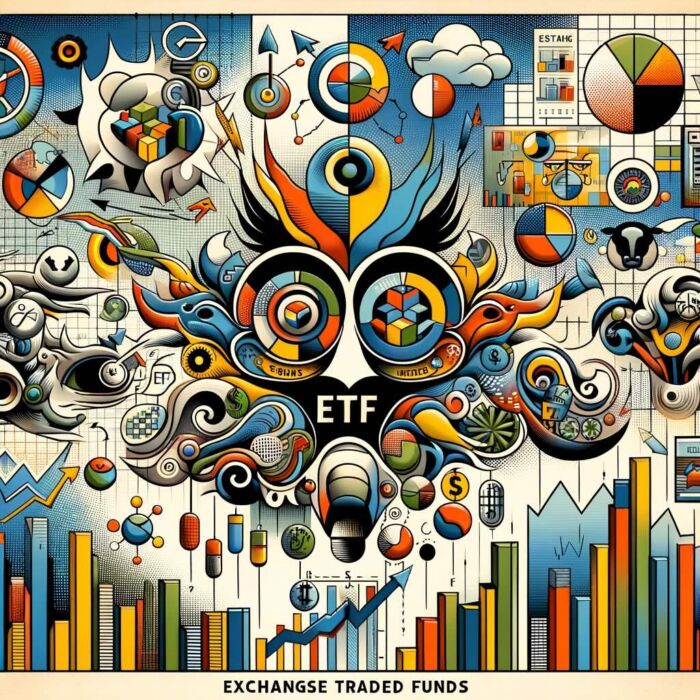
Importance and relevance in today’s investment climate
Now, you might be wondering, with a multitude of investment options already at our disposal, why should ETFs matter? Well, in today’s rapidly shifting investment climate, ETFs have taken center stage for several compelling reasons. For starters, they provide an unparalleled access to a wide array of assets classes and sectors, empowering the individual investor like never before.
In a world where information travels faster than light, markets can be unpredictable and highly volatile. ETFs, in this context, provide an avenue for instant diversification, which can help manage risk while still offering the potential for solid returns. They enable both mom-and-pop investors and Wall Street bigwigs alike to build a robust and diversified portfolio, without the need to invest large sums of money or buy individual securities.
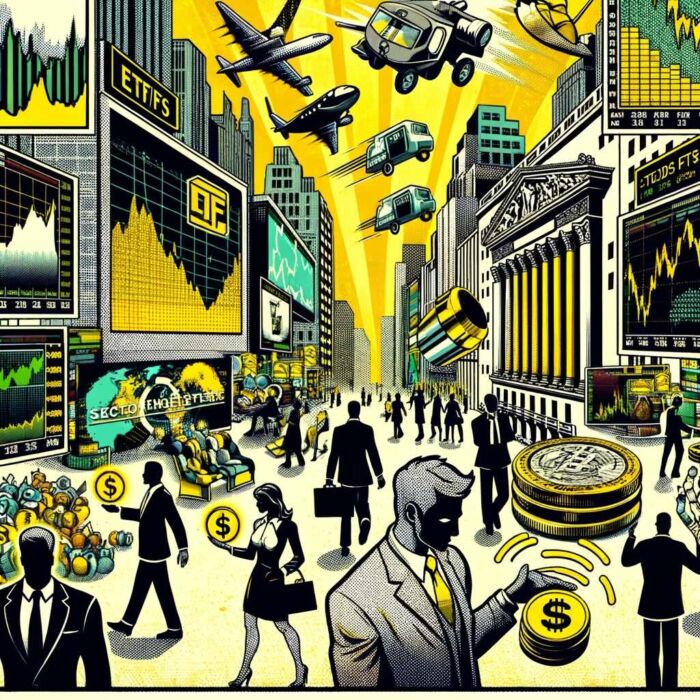
Furthermore, with their inherent flexibility and broad coverage, ETFs have democratized the investment landscape. It doesn’t matter if you’re a seasoned trader, a retirement saver, or a novice investor dipping your toes in the investment pool for the first time, ETFs have something to offer everyone. They are the workhorses of the modern portfolio, offering a potent mix of accessibility, affordability, and potential for growth.
The dynamic nature of ETFs allows investors to easily adjust their holdings to mirror their changing financial goals, risk tolerance, and market outlook. From sector-specific ETFs and country-based ETFs to thematic and factor-based ETFs, these innovative financial instruments offer a multitude of ways to customize your investment strategy.
In a nutshell, ETFs have undoubtedly become an essential cog in the machinery of today’s investment ecosystem. With their unique advantages and broad applicability, they have not only revolutionized how we invest but also democratized who gets to invest. Whether you’re planning for retirement, saving for a rainy day, or simply looking to grow your wealth, understanding ETFs can be your first step towards more informed, strategic, and successful investing. Welcome aboard the exciting journey of navigating the world of ETFs!
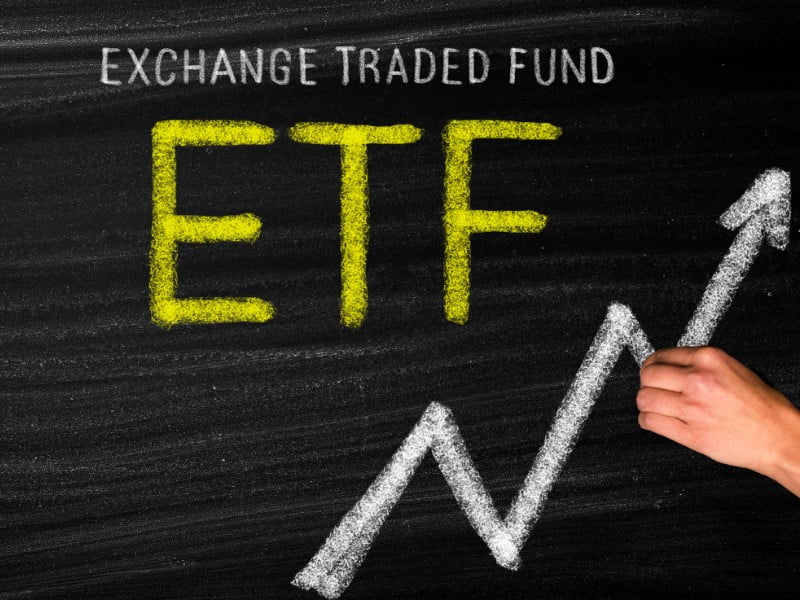
What is an ETF?
Think of an ETF as a friendly and approachable giant that allows you to hold a host of different securities in one go. The charming beauty of ETFs lies in their simplicity. At their core, ETFs are investment funds traded on stock exchanges, much like individual stocks. They are designed to track the performance of a specific index, sector, commodity, or asset class, giving investors an opportunity to gain broad exposure without having to buy each individual security. Still unsure? Let’s paint a picture. Imagine a massive shopping basket, and inside this basket, instead of groceries, you have stocks, bonds, commodities, or sometimes a mix of them all. That, my friends, is an ETF for you in its essence.
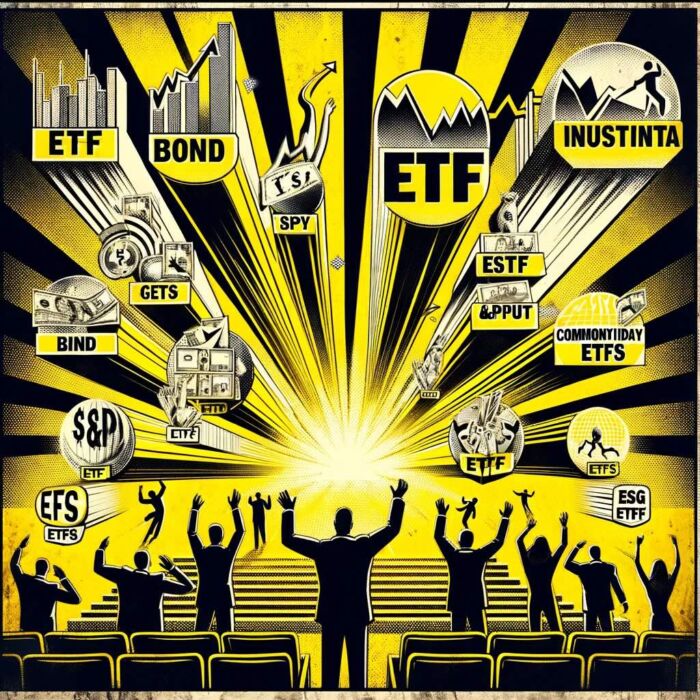
The History And Evolution of ETFs
Delving into the history of ETFs, we find ourselves transported back to 1993, when the very first ETF, the SPDR S&P 500 ETF (SPY), made its debut on the American Stock Exchange. This pioneer ETF sought to replicate the performance of the S&P 500 index, and it was a monumental success. The concept behind it was revolutionary: it allowed investors to buy or sell an entire index like a single stock. It was as if someone had turned on a light in a dark room and suddenly, everyone could see the endless possibilities.
As the success of the SPY ETF echoed through the corridors of the investment world, other players quickly entered the scene, bringing a variety of ETFs to the table. The turn of the millennium saw the advent of bond ETFs, while the later years brought us sector-specific ETFs, commodity ETFs, international ETFs, and more. The last decade has also seen a remarkable rise in thematic and ESG (Environmental, Social, and Governance) ETFs, mirroring the changing investor preferences and societal trends.
How ETFs work
Now that we know what ETFs are and where they came from, let’s delve into how they actually work. Buckle up, as we’re about to embark on an exhilarating ride into the inner workings of ETFs.
The creation of an ETF starts with a major financial institution, known as the authorized participant (AP). The AP forms an agreement with the ETF issuer to handle the creation and redemption process of ETF shares. When creating new ETF shares, the AP buys all the individual securities that make up the ETF in their correct proportions and delivers these to the ETF issuer. In return, the issuer gives the AP a block of equally valued ETF shares, called a creation unit. The AP then breaks up these creation units into individual ETF shares and sells them on the open market to you and me.
When it comes to trading, ETFs behave just like individual stocks. They are listed on major stock exchanges and their prices fluctuate throughout the trading day, based on supply and demand. This gives ETFs their unique flexibility, as investors can buy and sell ETF shares at any point during the trading hours.
But the charm of ETFs doesn’t end there. Unlike mutual funds, which calculate their net asset value (NAV) at the end of each trading day, ETFs provide real-time pricing. This means that at any given moment during the trading day, you can get a snapshot of how your investment is performing. Additionally, ETFs are renowned for their transparency. Most ETFs disclose their holdings daily, giving investors a clear view of where their money is being invested.
So, there you have it, a peek under the hood of ETFs. They might sound complex, but once you get the hang of them, they can be a powerful tool in your investment toolbox. Like a reliable and versatile Swiss army knife, they are equipped to offer a device to serve all purposes.
source: Joshua Mayo on YouTube
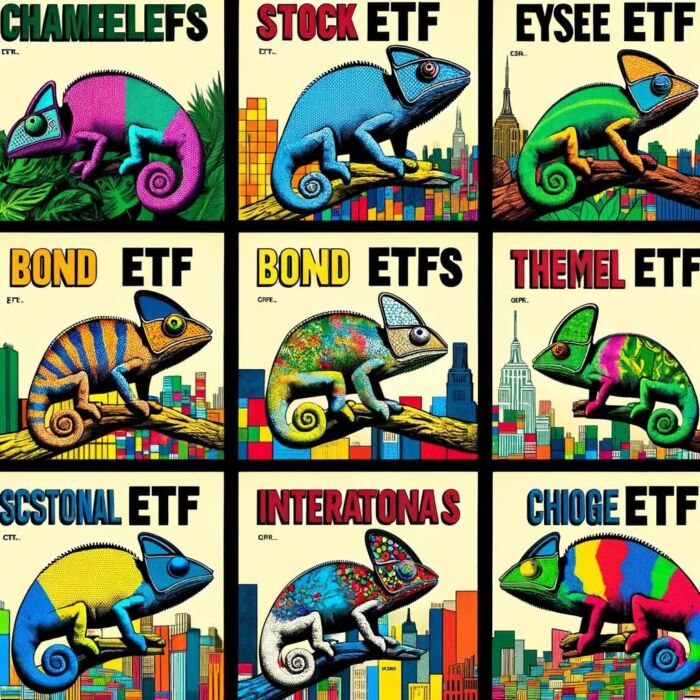
Types of ETFs
In the fantastical universe of investing, ETFs are much like the chameleons of the financial jungle, adapting and providing a variety of options to meet different investor needs and objectives. Let’s take a deeper dive into the different types of ETFs that have flourished in this ecosystem.
Stock ETFs
The first breed we encounter on our journey are Stock ETFs, also known as Equity ETFs. These are your bread and butter, the backbone of the ETF family. Stock ETFs track an index of stocks to replicate their performance. They offer a smorgasbord of options, from broad market indices like the S&P 500 to specific slices of the market, like small-cap companies or growth stocks. They are a favorite among investors, offering a simple and affordable way to access the potentially lucrative world of equities without the need to pick individual stocks.
Bond ETFs
Next on our tour, we meet Bond ETFs. These funds are a bit like the older, more responsible sibling in the ETF family. Instead of tracking an index of stocks, they track indices of bonds. Bond ETFs can give you exposure to government bonds, corporate bonds, municipal bonds, and more. They are traditionally seen as a safer haven compared to stock ETFs, offering a steady stream of income while helping to balance the risk in your portfolio.
Sector and industry ETFs
Moving on, we find the Sector and Industry ETFs. These funds are a bit like the fashionistas of the ETF world, allowing you to invest in trendy sectors or industries. Want a piece of the burgeoning tech industry? Or perhaps you’re bullish on healthcare or clean energy? Sector and Industry ETFs let you focus your investments on specific slices of the market, providing a convenient way to bet on the sectors or industries you believe in.
Commodity ETFs
Next up are the Commodity ETFs, the Indiana Jones of ETFs, taking you on an adventure into the world of physical goods. These ETFs track the price of commodities, like gold, silver, oil, or grains. Some physically hold the commodity, like a gold ETF that owns and stores gold bars, while others use futures contracts to track the commodity’s price. These ETFs can serve as a hedge against inflation and volatility or just provide an avenue to diversify.
International ETFs
Next, we cross borders with International ETFs. Think of these as the seasoned globetrotters of the ETF world, offering you exposure to foreign markets. Whether you want to invest in a specific country, like China or Germany, or a region like Europe or Latin America, these ETFs give you a ticket to ride the international markets without leaving the comfort of your home.
Inverse ETFs
The Inverse ETFs are the contrarians of the group. They make money when the market or a specific index falls, offering a way to profit from a downturn or to hedge other investments against market risk. However, these ETFs can be risky and are generally recommended for experienced investors.
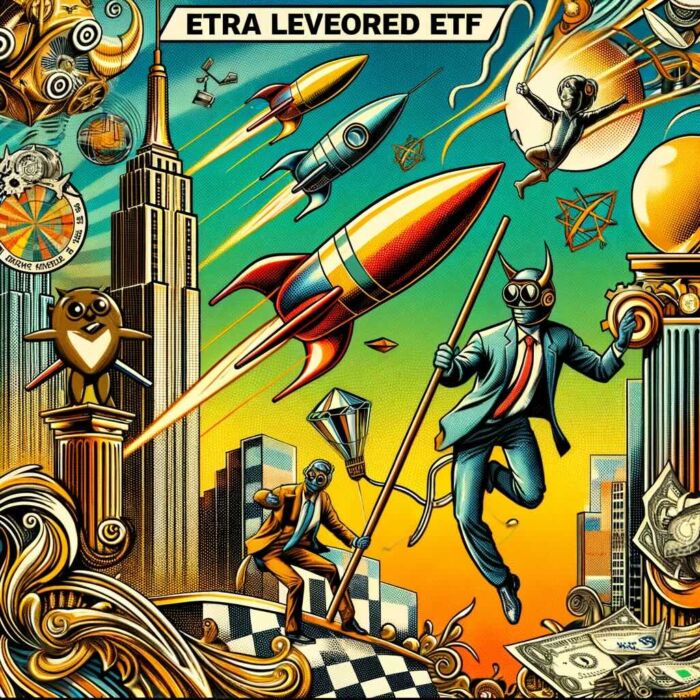
Leveraged ETFs
Finally, we encounter the daredevils, the Leveraged ETFs. These ETFs use financial derivatives and debt to amplify the returns of an underlying index. They can offer double or even triple the daily return of an index. However, this comes with a higher level of risk and potential for losses, making them suitable only for sophisticated investors with a higher risk tolerance.
Navigating the different types of ETFs is like browsing through an extensive, diverse menu. Whether you’re a cautious investor looking for stable returns, a thrill-seeker looking for high growth, or somewhere in between, there’s an ETF to satisfy your investment appetite.
source: Learn to Invest – Investors Grow on YouTube
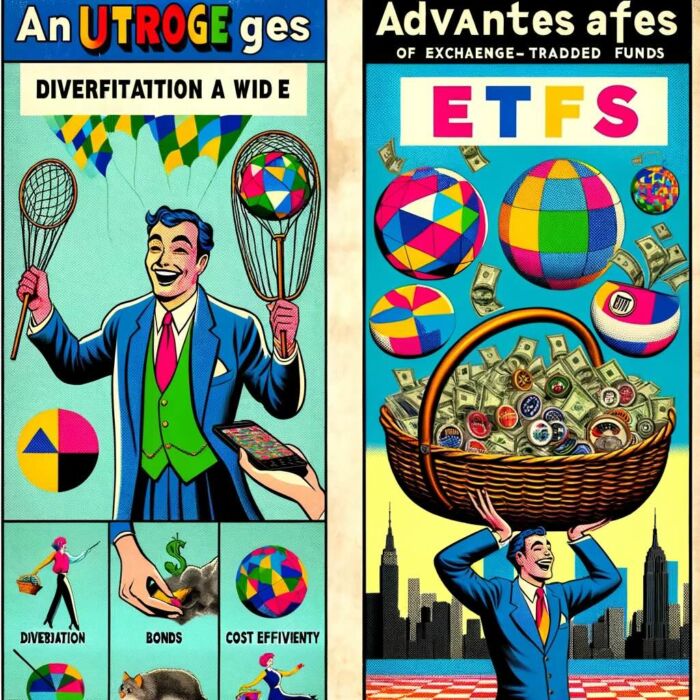
Advantages of ETFs
In the world of investing, ETFs are like a multi-tool pocket knife. Their multifaceted benefits and vast applications make them a favored choice among many investors. Let’s dive into some of these benefits.
Diversification
First and foremost, ETFs are your ticket to the magical world of diversification. Think of it as putting not just one or two, but a whole spectrum of eggs in your investment basket. When you invest in an ETF, you’re buying a slice of an entire index, sector, or commodity, thereby spreading your investment across a multitude of securities. It’s like casting a wide net across the ocean of investment opportunities. This helps to spread risk and potentially increase returns, shielding your portfolio from the volatility of individual securities. Diversification, in the world of ETFs, isn’t just a strategy – it’s a superpower!
Lower costs compared to mutual funds
Next on our list, ETFs are cost-efficient warriors in the investing realm. Unlike mutual funds, where a fund manager actively selects and manages the securities, most ETFs are passively managed, aiming to replicate the performance of an index. This results in lower operating expenses and hence lower expense ratios. Paying less in fees means you keep more of your investment returns. It’s like going shopping and finding all your favorite items on sale!
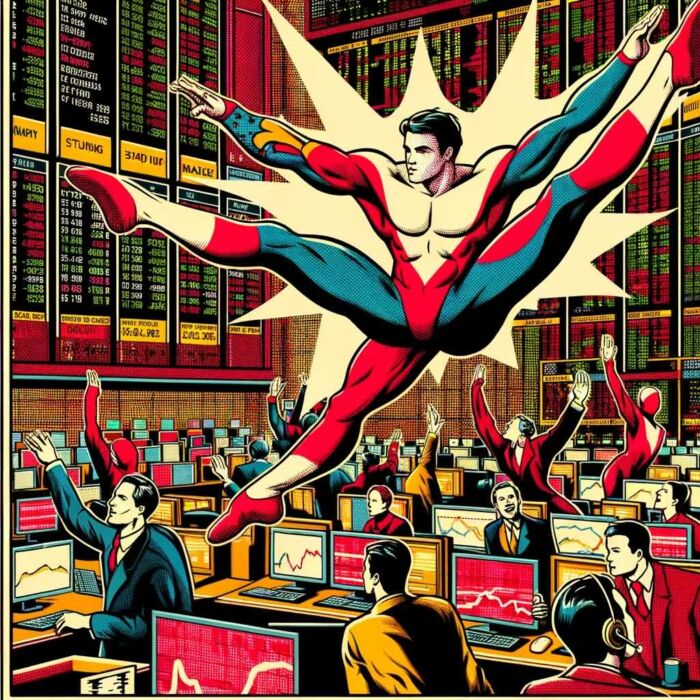
Liquidity – Trade like stocks
The beauty of ETFs is that they bring the flexibility and liquidity of stock trading to the world of funds. They’re traded on an exchange just like individual stocks, meaning you can buy or sell them throughout the trading day at market prices. This ability to trade intraday is a feature mutual funds typically lack, making ETFs the nimble gymnasts of the financial arena, swiftly moving as per investors’ commands.
Accessibility – No minimum investment required
ETFs are the torchbearers of democratic investing, making them an attractive proposition for all types of investors. With no minimum investment requirements, they welcome everyone to participate, from the big institutional investors to the small retail investors. It’s like having a VIP pass to a concert that doesn’t break the bank.
Tax Efficiency
Last but certainly not least, ETFs are the tax-savvy members of the investing world. Thanks to the “in-kind” creation and redemption process of ETFs, they are generally able to avoid triggering capital gains taxes until the investment is sold. In a nutshell, it means your money can potentially grow more over time due to compounding, as fewer of your returns are being nibbled away by taxes.
In conclusion, ETFs are versatile, cost-efficient, accessible, and tax-friendly investment vehicles that offer significant advantages for both novice and experienced investors. They are like your loyal companions, ready to join you on your investment journey and help you navigate the vibrant landscape of the financial markets. No matter your investment goal or risk appetite, ETFs offer a compelling mix of features that can help you build and optimize your portfolio. Just remember, as with any investment, it’s important to understand what you’re investing in and whether it aligns with your financial goals and risk tolerance.
source: The Money Guy Show on YouTube

Risks and Disadvantages of ETFs
Every rose has its thorns, and while ETFs are a blossoming flower in the garden of investing, they come with their own set of challenges. Let’s delve into these with a balanced perspective and explore how to navigate these potential risks.
Market risk
First, let’s meet the omnipresent entity known as Market Risk. This is the risk that the entire market or sector will decline, dragging down the value of the ETF along with it. No matter how diversified or well-constructed the ETF, it cannot escape the ebb and flow of the market currents. It’s like going on a boat ride; even the sturdiest ship can experience turbulence in stormy weather. But fear not, weathering these storms and staying the course is often part and parcel of the investing journey.
Liquidity risk
Next up is the somewhat elusive Liquidity Risk. While most popular ETFs are highly liquid, some ETFs, particularly those tracking niche sectors or less liquid markets, can be less traded. This can result in wider bid-ask spreads, meaning you might pay more when you buy and receive less when you sell. It’s a bit like trying to buy or sell a rare collectible; the price you get can depend on how many people are interested in trading it at the same time as you. It’s always a good idea to check the liquidity of an ETF before jumping in.
![]()
Tracking error
Meet the often overlooked Tracking Error. This is the risk that the ETF will not perfectly match the performance of the index it’s tracking. This could happen due to transaction costs, management fees, or the practical challenges of holding all the securities in the index. In a way, it’s like trying to follow a recipe; sometimes, the final dish doesn’t quite taste like what you had in the restaurant. While generally minor, it’s a good idea to keep an eye on the tracking error when choosing your ETFs.
Risks associated with leveraged and inverse ETFs
Lastly, we encounter the daredevils of the group: Leveraged and Inverse ETFs. These ETFs are like riding a roller coaster. While they can potentially lead to outsized gains, they can also result in outsized losses. These ETFs are designed to amplify or inverse the daily performance of an index, making them far more volatile and risky than standard ETFs. They’re designed for short-term trading and may not reflect the expected returns over longer periods due to the effects of compounding. Therefore, they may be unsuitable for the average investor.
While these risks might seem intimidating, understanding them is a crucial part of your investment journey. Just as a seasoned sailor understands the sea, knowing these potential challenges can help you navigate the investment waters with greater confidence and wisdom. Remember, investing is not about avoiding risks but about understanding and managing them. With careful research, thoughtful planning, and a clear understanding of your own risk tolerance and investment goals, you can use ETFs to create a robust portfolio that stands the test of time.

How to Invest in ETFs
Now that you’ve familiarized yourself with the enchanting world of ETFs, the various types available, their dazzling advantages, and the cautionary tales of risks, you’re probably eager to embark on your own ETF journey. Let’s walk through the steps you need to take to begin your ETF investment adventure.
Choosing the right ETF
Think of this as finding your perfect dance partner in the grand ball of investing. Choosing the right ETF requires you to consider your investment goals, risk tolerance, and time horizon. Are you looking for growth, income, capital preservation, or a combination of these? What level of risk are you comfortable with? How long can you leave your money invested? Once you have a clear idea of what you’re looking for, you can then research different ETFs to find those that align with your goals. Consider factors like what index or sector the ETF tracks, its performance history, and its expense ratio. Remember, the right ETF is not the one that’s topping the charts today, but the one that dances in tune with your unique investment melody.

Where to buy ETFs: Brokerage accounts
To buy ETFs, you’ll need an account with a brokerage firm. Think of this as your gateway to the bustling marketplace of the investing world. There are many brokerages to choose from, including traditional broker-dealers and online discount brokers. When selecting a broker, consider factors like trading commissions, account fees, the quality of their customer service, and the robustness of their trading platforms. A good brokerage account is like a reliable tour guide, making your journey through the investing landscape easier and more enjoyable.
The process of buying and selling ETFs
Once you’ve chosen your ETF and have your brokerage account set up, you’re ready to make your move. Buying and selling ETFs is just like trading stocks. You can place market orders, which are executed at the current market price, or limit orders, which are executed only at a specified price or better. Keep in mind that ETF prices can fluctuate throughout the day. It’s a bit like an exciting auction, where you get to decide the price at which you’re willing to buy or sell.
Understanding ETF expense ratios
Before you take the leap, it’s important to understand the cost associated with ETFs. The primary cost is the expense ratio, which is the annual fee charged by the fund manager. This ratio is expressed as a percentage of your total investment. For example, an expense ratio of 0.20% means you’ll pay $2 annually for every $1,000 invested. It’s a bit like a maintenance fee for a service. While it may seem small, over time, even a slightly higher expense ratio can eat into your returns. Therefore, it’s always a good idea to compare expense ratios when choosing between similar ETFs.
Investing in ETFs is a journey of exploration, a dance with the market rhythms, and a continual learning process. Armed with a solid understanding of how ETFs work, you’re ready to set sail on your ETF adventure. Remember, patience, diligence, and a clear vision of your financial goals are your best companions on this journey.
source: Jarrad Morrow on YouTube
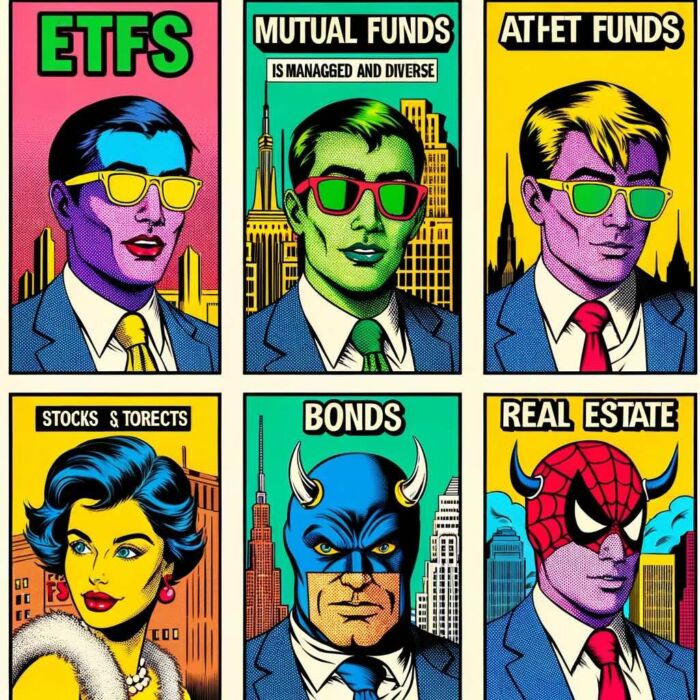
Comparing ETFs with Other Investment Vehicles
Now that we’ve ventured deep into the world of ETFs, it’s time for us to step back and see how these fascinating creatures fare in comparison to other inhabitants of the financial ecosystem. Like comparing different species in the natural world, let’s see how ETFs stack up against Mutual Funds, Individual Stocks, and Index Funds.
ETFs vs. Mutual Funds
At first glance, ETFs and mutual funds may seem like twins; after all, both offer diversification and professional management. But look closer and the differences start to emerge. Unlike mutual funds, which are only traded once a day after the market closes, ETFs can be traded throughout the day just like stocks. This gives ETFs a dance-like fluidity, allowing you to respond swiftly to market movements. Moreover, ETFs generally boast lower expense ratios than mutual funds thanks to their passive management strategy. Lastly, due to their unique “in-kind” creation and redemption process, ETFs tend to be more tax-efficient than their mutual fund counterparts. In essence, if mutual funds are classical music, ETFs are jazz, providing more flexibility, spontaneity, and improvisation.
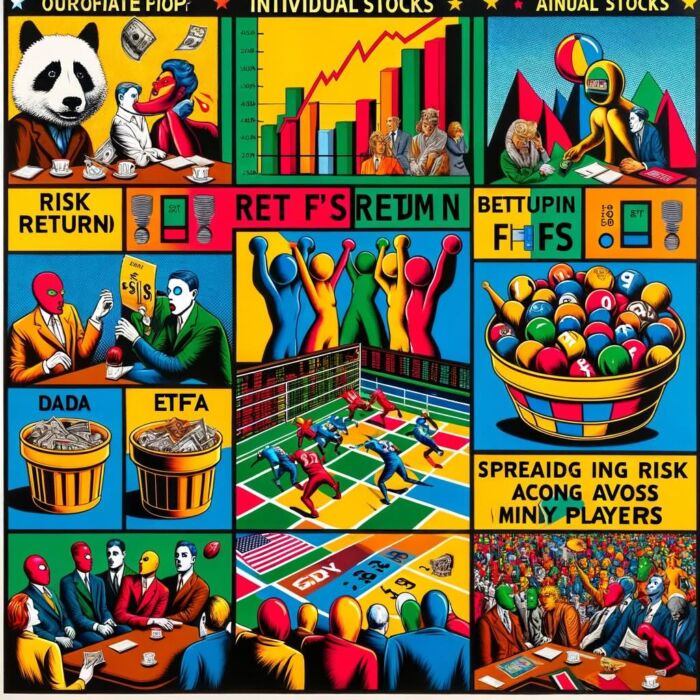
ETFs vs. Individual Stocks
ETFs and individual stocks represent different rungs on the risk and return ladder. When you buy an individual stock, you’re putting your money on one company’s success or failure – it’s like betting on a single player in a football match. ETFs, on the other hand, offer a basket of stocks, spreading the risk across many players. While this means you may miss out on the spectacular success of one company, you’re also protected from the downfall of a single player. Additionally, investing in individual stocks requires time and expertise for research, while ETFs offer a readymade diversified portfolio managed by professionals. Therefore, while individual stocks can be exciting and potentially rewarding, ETFs provide a balanced and less risky approach to investing in the stock market.
ETFs vs. Index Funds
ETFs and index funds are close cousins, both aiming to replicate the performance of a specific index. The main difference lies in their tradeability and investment minimums. ETFs are traded like stocks on an exchange, allowing for intraday trading and short selling. Conversely, index funds are mutual funds and only transact once per day at the closing net asset value (NAV). Also, many index funds require a minimum investment, while ETFs let you buy as little as one share. Finally, some ETFs offer options, such as leveraged or inverse ETFs, that are not typically available with index funds. Therefore, if index funds are like a steady river, ETFs are more like the sea, offering more waves and tides of opportunities.
While all these investment vehicles have their unique advantages and suit different investing styles, ETFs stand out for their versatility, accessibility, and flexibility. Like chameleons in the financial jungle, they adapt to various investor needs, offering an array of investment opportunities. It’s always important to consider your personal goals, risk tolerance, and investment horizon when choosing your investment vehicle. Whether you opt for the broad diversification of an ETF, the focused bet of an individual stock, the steady strategy of an index fund, or the active management of a mutual fund, the choice is ultimately yours to make.
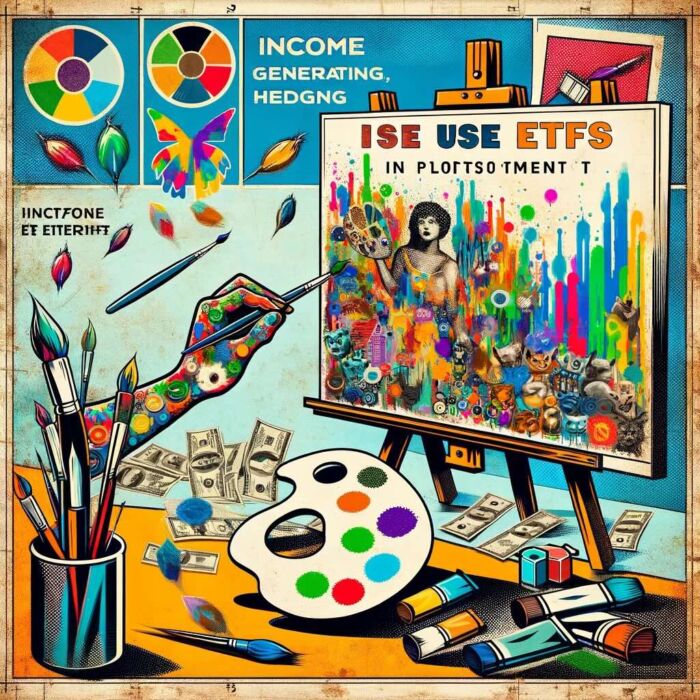
ETFs in Portfolio Management
As we venture further into our exploration of ETFs, let’s delve into how they can be wielded in the art of portfolio management. Just like a painter uses different colors and brush strokes to create a masterpiece, an investor can use ETFs to create a diversified, income-generating, and hedged portfolio.
Strategic role of ETFs in a diversified portfolio
In the grand orchestra of your investment portfolio, ETFs play a critical role. They offer broad market exposure, enabling you to diversify across various asset classes, sectors, and geographical regions. By doing so, ETFs can help mitigate the risk of individual stock or sector downturns, and potentially enhance returns. In other words, they ensure that all your investment eggs aren’t in one basket. It’s like creating a rich and flavorful stew with various ingredients – if one ingredient is a little off, the others can still deliver a delicious dish. Therefore, ETFs serve as an invaluable tool in the strategic design of a robust and balanced portfolio.
ETFs for income: Dividend ETFs
In the world of investing, who says you can’t earn while you learn? Meet the income-generating stars of the ETF universe: Dividend ETFs. These ETFs invest in companies that distribute a portion of their earnings to shareholders in the form of dividends. They’re akin to a fruit-bearing tree in your investment garden, regularly dropping tasty fruits (dividends) into your basket. These ETFs can provide a consistent income stream, making them particularly attractive to income-focused investors such as retirees. Remember, though, that as with any investment, it’s essential to consider the underlying assets, the ETF’s track record, and your personal risk tolerance.
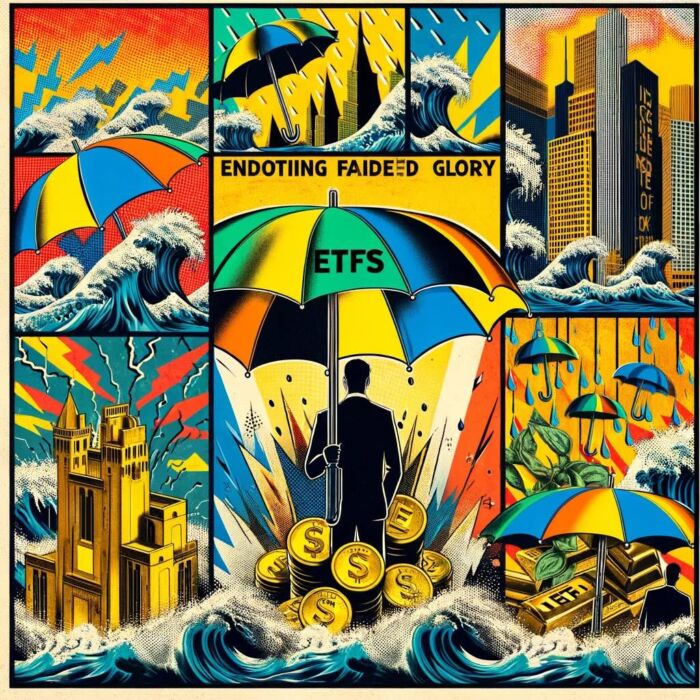
Using ETFs for hedging strategies
Lastly, let’s explore how ETFs can serve as a protective shield for your investment portfolio. Certain types of ETFs, such as inverse and commodity ETFs, can be used for hedging strategies. Inverse ETFs aim to deliver the opposite performance of a specific index, making them a useful tool when you anticipate a market downturn. They’re like an umbrella, offering protection when it starts to rain in the market. Commodity ETFs, on the other hand, provide exposure to physical assets like gold, which are often seen as safe-havens during market volatility. It’s like having a reliable fortress that stands strong even in the face of market storms. Do note, however, that these hedging strategies can be complex and involve additional risks, so they may not be suitable for all investors.
ETFs are like Swiss Army Knives in the world of investing, offering a multifaceted tool for diversification, income generation, and risk management. With their versatility and broad range, they can play a crucial role in crafting a well-rounded, strategic investment portfolio. As always, remember that investing involves risks, and it’s essential to understand the specific characteristics and risks of any ETF before adding it to your portfolio. Here’s to smart investing and robust portfolio management with ETFs!
source: ETFguide on YouTube
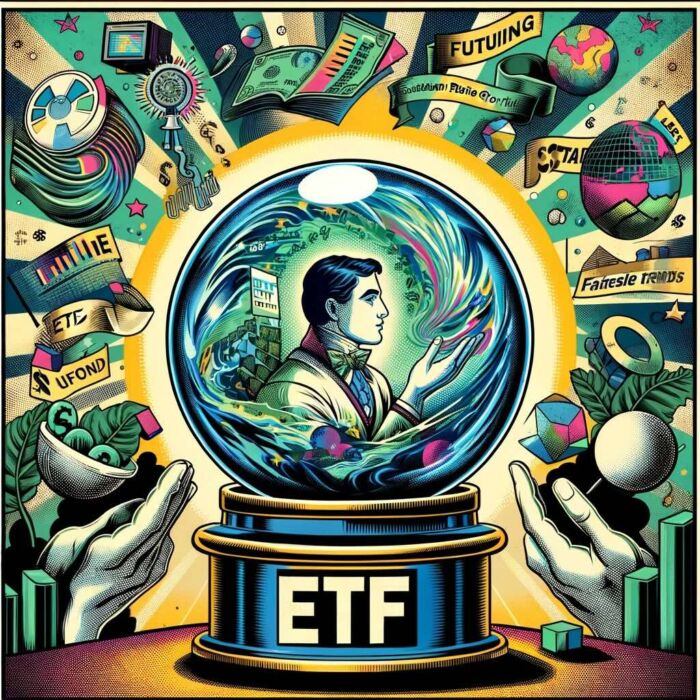
Future Trends in ETFs
As we approach the final leg of our ETF journey, it’s time to turn our gaze towards the horizon, exploring the future landscape of ETFs. Much like how a fortune teller gazes into a crystal ball to glimpse the future, let’s dive into the emerging trends that are shaping the evolution of ETFs.
Growth of thematic ETFs
First, let’s step into the world of Thematic ETFs. These are the storytellers of the ETF universe, each weaving a unique narrative around a specific theme or trend, such as technology, healthcare innovation, or even the gig economy. They offer investors a chance to tap into emerging trends and sectors that are expected to experience significant growth. It’s like catching the wind in your sails just as it starts to blow, propelling you forward faster and more smoothly. As our world continues to evolve rapidly, we can expect to see more thematic ETFs emerging, capturing the essence of various social, technological, and economic trends.
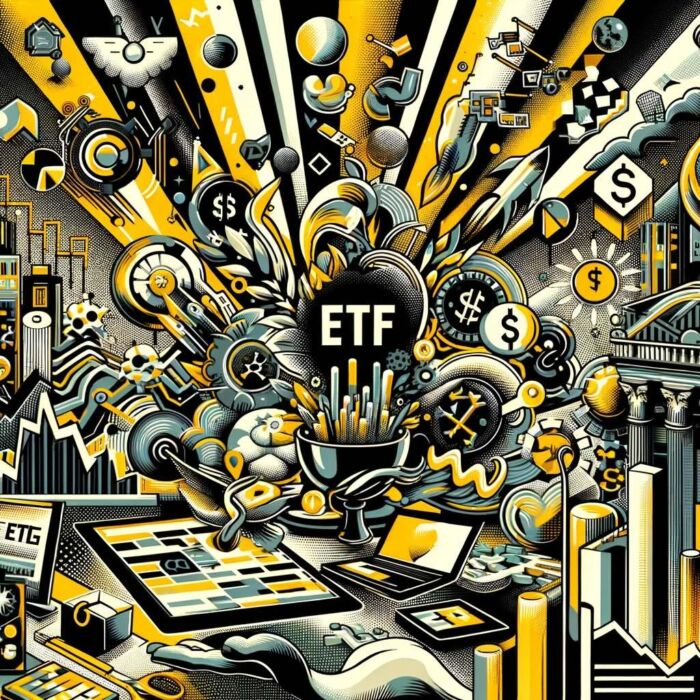
The rise of ESG (Environmental, Social, and Governance) ETFs
Next, let’s explore the flourishing garden of ESG ETFs. These ETFs are for investors who care not only about financial returns but also about the impact of their investments on the world. ESG ETFs invest in companies that excel in environmental stewardship, social responsibility, and strong governance. As sustainability and corporate responsibility become increasingly important, ESG ETFs are gaining popularity. They are like the farmers of the investment world, nurturing the seeds of change and reaping the rewards of responsible growth. Looking forward, as more investors seek to align their portfolios with their values, the rise of ESG ETFs seems destined to continue.
Potential regulatory changes and their impacts on ETFs
Lastly, let’s delve into the complex and evolving world of regulations. Just as every journey may face unexpected roadblocks or detours, the world of ETFs can be impacted by changes in regulatory frameworks. For example, regulators may introduce new rules related to transparency, the use of derivatives, or the creation of new types of ETFs. These changes can have a profound impact on how ETFs operate and on your investment journey. They are like the weather on a sailing trip – while you can’t control it, being prepared and understanding the potential impact can help you navigate smoothly. It’s therefore important to stay informed about regulatory developments in the ETF space.
The world of ETFs is a dynamic and evolving landscape, shaped by emerging investment trends and regulatory changes. As thematic and ESG ETFs continue to rise in popularity and regulatory changes bring new opportunities and challenges, the future of ETFs promises to be an exciting journey of growth, innovation, and adaptation. As an investor, staying informed about these trends and understanding their implications can help you navigate the future of ETF investing with confidence and foresight. Here’s to a future filled with successful ETF investing!
source: TD Ameritrade on YouTube
Conclusion: ETFs 101 Guide
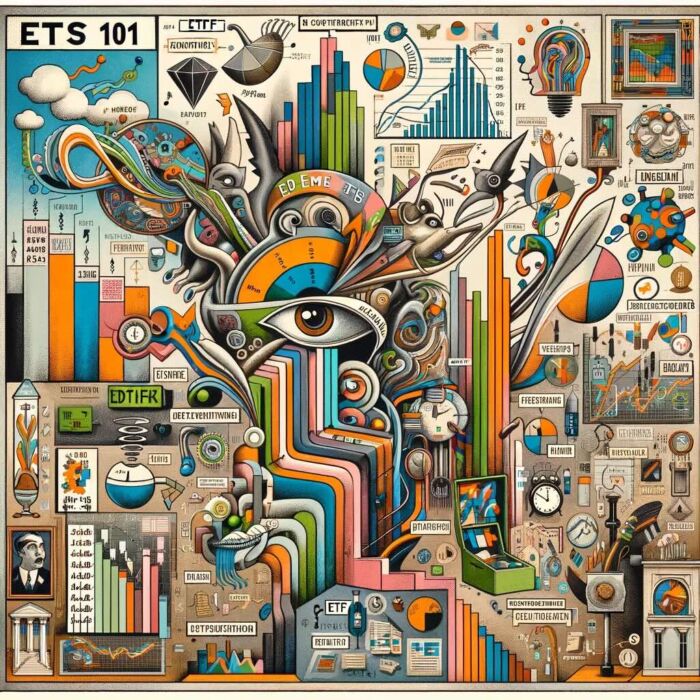
As we finally dock our vessel at the conclusion of this voyage through the universe of ETFs, it’s time to take a moment to reflect on the colorful panoramas we’ve seen, the exciting stories we’ve heard, and the valuable insights we’ve gained.
From our first introduction to the captivating world of ETFs, we’ve journeyed through the history and mechanics of these dynamic financial instruments. We’ve explored the varied terrains of ETF types, marveled at the advantages they offer, and navigated the potential risks and pitfalls they may harbor. We’ve learned the art of investing in ETFs and compared them with other investment vehicles to understand their unique traits and benefits.
Further, we charted a strategic course in portfolio management, understanding the critical roles that ETFs can play in diversification, income generation, and hedging. We’ve also glanced into the crystal ball, foreseeing the emerging trends in the ETF landscape including thematic and ESG ETFs, and potential regulatory changes.
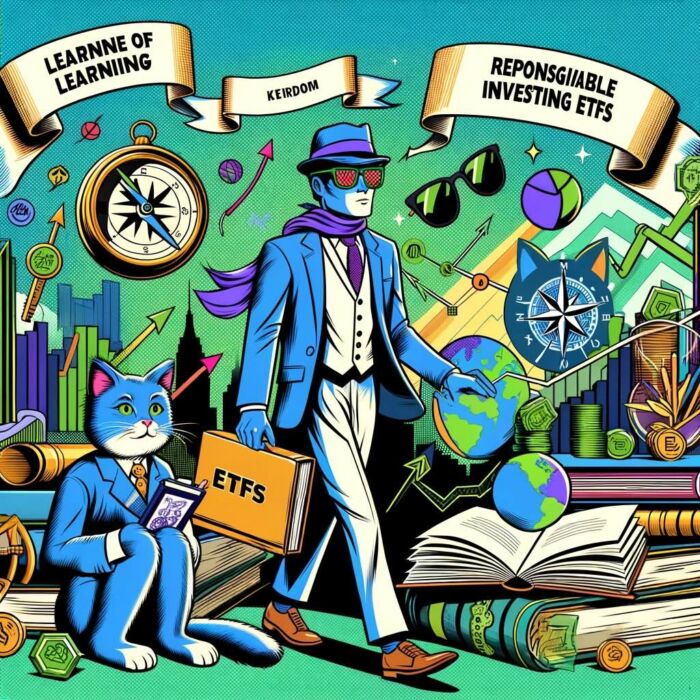
Further learning and responsible investing
But remember, fellow explorers, this journey has only just begun. The world of ETFs is vast and ever-evolving, with new territories emerging and uncharted waters beckoning. It beckons you to keep learning, to keep questioning, to stay curious. As the legendary investor Benjamin Graham once said, “The individual investor should act consistently as an investor and not as a speculator.”
Therefore, as you embark on your own ETF adventures, remember to invest responsibly. Understand your risk tolerance and investment goals, thoroughly research any ETF before investing, and consider seeking advice from financial professionals if needed. Be wary of market hype and remember, investing is not a sprint but a marathon.
Moreover, ETFs offer you the chance not only to grow your wealth but also to shape the world. By choosing where to invest, you can support companies that align with your values and contribute to a sustainable and equitable future.
In conclusion, the world of ETFs is like a vibrant symphony, filled with different instruments, rhythms, and melodies. By understanding and appreciating its complexity, you can become not just a listener, but a conductor, skillfully orchestrating your unique investment masterpiece. May your journey through the universe of ETFs be filled with wisdom, success, and fulfillment. Happy investing!
Important Information
Comprehensive Investment Disclaimer:
All content provided on this website (including but not limited to portfolio ideas, fund analyses, investment strategies, commentary on market conditions, and discussions regarding leverage) is strictly for educational, informational, and illustrative purposes only. The information does not constitute financial, investment, tax, accounting, or legal advice. Opinions, strategies, and ideas presented herein represent personal perspectives, are based on independent research and publicly available information, and do not necessarily reflect the views or official positions of any third-party organizations, institutions, or affiliates.
Investing in financial markets inherently carries substantial risks, including but not limited to market volatility, economic uncertainties, geopolitical developments, and liquidity risks. You must be fully aware that there is always the potential for partial or total loss of your principal investment. Additionally, the use of leverage or leveraged financial products significantly increases risk exposure by amplifying both potential gains and potential losses, and thus is not appropriate or advisable for all investors. Using leverage may result in losing more than your initial invested capital, incurring margin calls, experiencing substantial interest costs, or suffering severe financial distress.
Past performance indicators, including historical data, backtesting results, and hypothetical scenarios, should never be viewed as guarantees or reliable predictions of future performance. Any examples provided are purely hypothetical and intended only for illustration purposes. Performance benchmarks, such as market indexes mentioned on this site, are theoretical and are not directly investable. While diligent efforts are made to provide accurate and current information, “Picture Perfect Portfolios” does not warrant, represent, or guarantee the accuracy, completeness, or timeliness of any information provided. Errors, inaccuracies, or outdated information may exist.
Users of this website are strongly encouraged to independently verify all information, conduct comprehensive research and due diligence, and engage with qualified financial, investment, tax, or legal professionals before making any investment or financial decisions. The responsibility for making informed investment decisions rests entirely with the individual. “Picture Perfect Portfolios” explicitly disclaims all liability for any direct, indirect, incidental, special, consequential, or other losses or damages incurred, financial or otherwise, arising out of reliance upon, or use of, any content or information presented on this website.
By accessing, reading, and utilizing the content on this website, you expressly acknowledge, understand, accept, and agree to abide by these terms and conditions. Please consult the full and detailed disclaimer available elsewhere on this website for further clarification and additional important disclosures. Read the complete disclaimer here.

